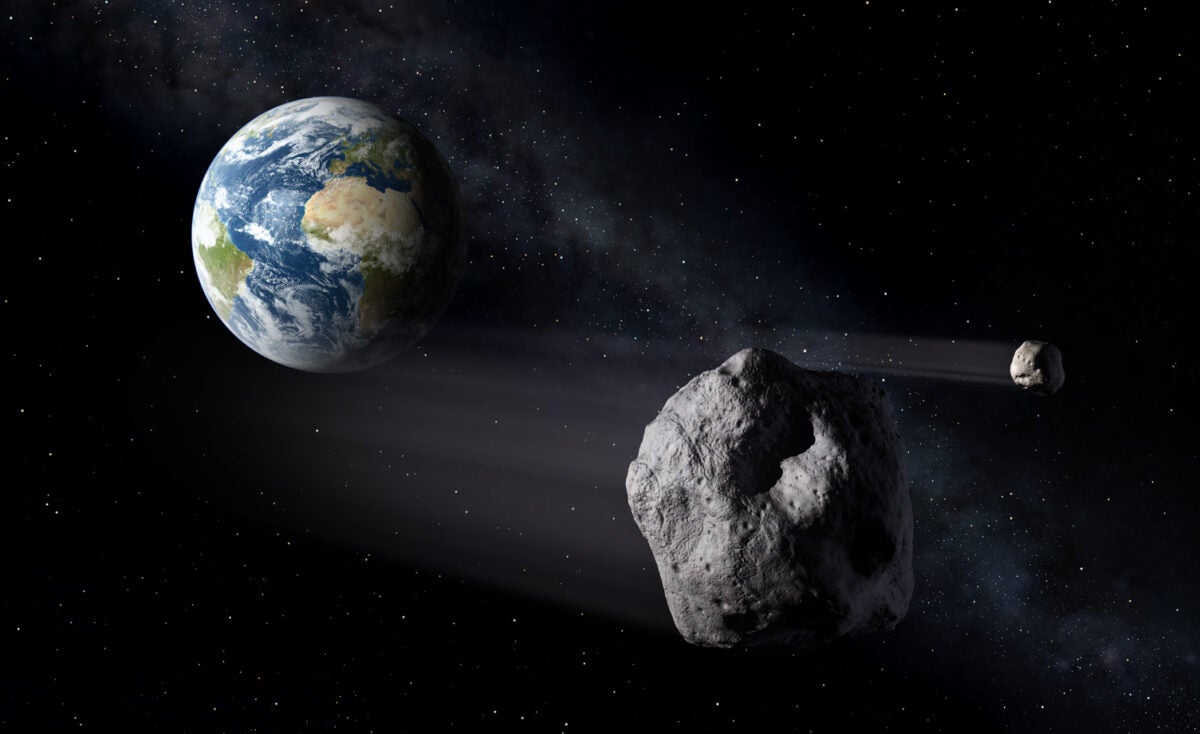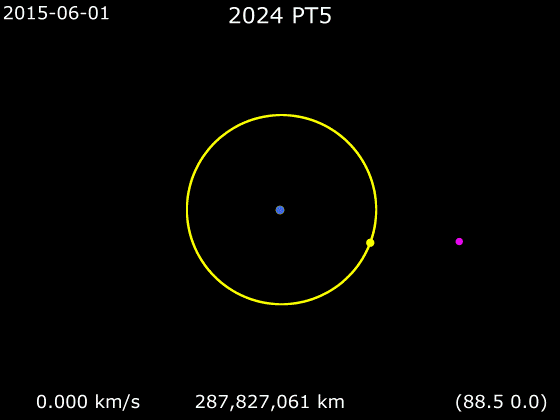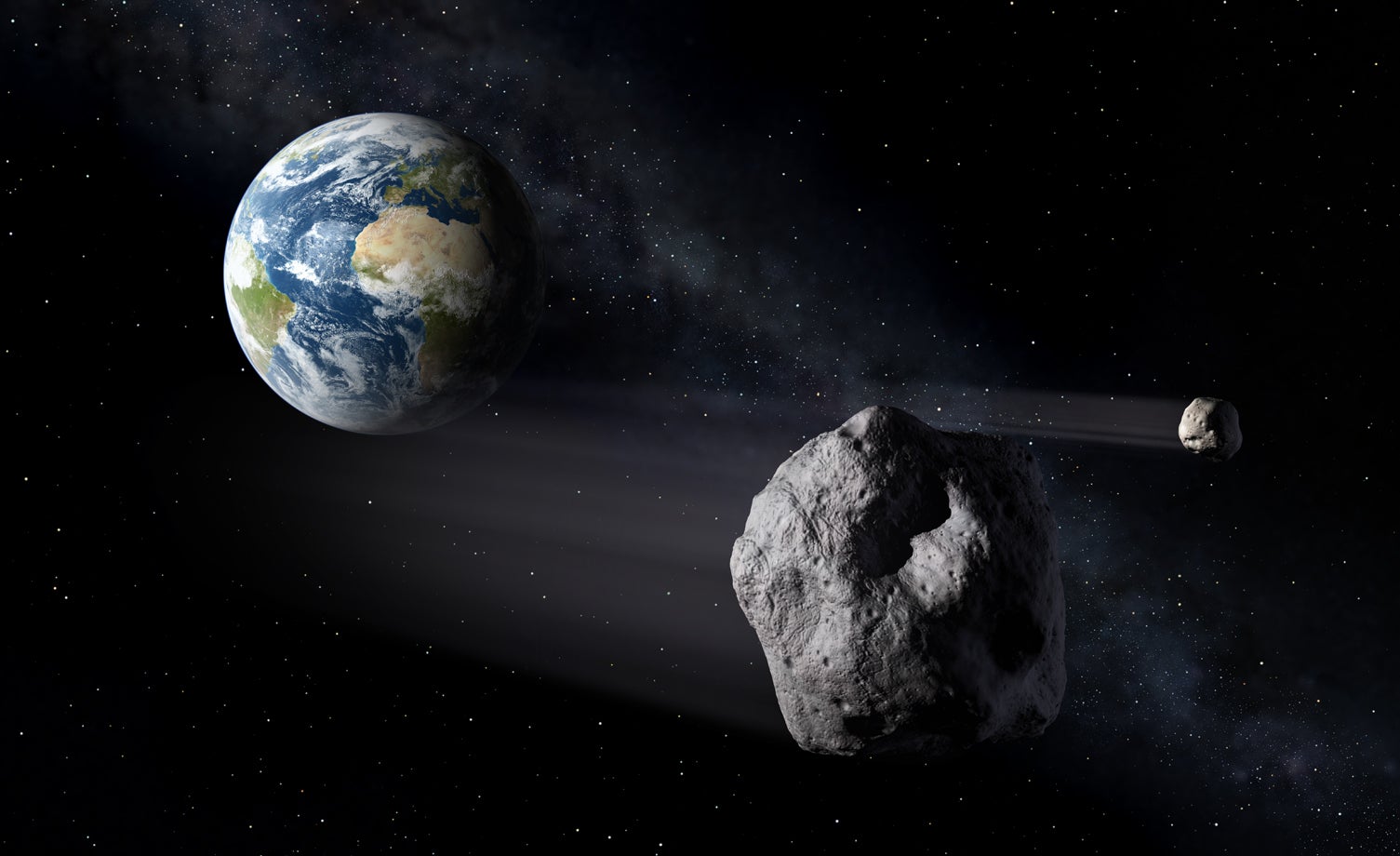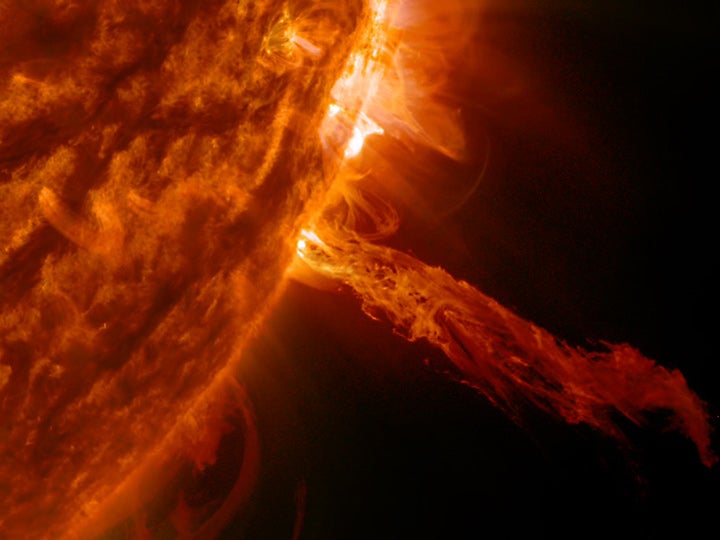*
For a short time, dear Luna has a friend.

2024 PT5 is a near-Earth object — like the one depicted in this artist’s concept — that will swing around Earth before heading back on its way through the solar system. Credit: NASA
Earth is about to receive a visitor from outer space. No little green men, alas, but a tiny and temporary moon will grace our skies for two months, beginning this weekend.
Astronomers Carlos de la Fuente Marcos and Raúl de la Fuente Marcos from Ciudad Universitaria in Madrid were the ones to discover the mini-moon, dubbed 2024 PT5, which spans just 33 feet (10 meters). The pair of researchers found the moon buried in data from the intimidatingly named Asteroid Terrestrial-impact Last Alert System (ATLAS), using a dedicated telescope at Sutherland Observing Station in South Africa.
By coincidence, this telescope is the same one that played a key role in the discovery of Comet Tsuchinshan-ATLAS (C/2023 A3), which is currently gracing our skies.
Despite the telescope’s bleak name, the moonlet PT5 will not actually impact Earth — and won’t even orbit Earth entirely. Instead, it will take a horseshoe-shaped path around our planet beginning September 29, and escaping its gravitational clutches again on November 25.
A popular pastime
2024 PT5 isn’t the first body to fall under Earth’s influence. While our permanent Moon has been with us since Earth’s infancy, our planet has picked up and discarded a few smaller companions over the years.
A moon named 2006 RH120 orbited Earth for a year from July 2006 to 2007. And another named 2020 CD3 stuck around for several years before flying away in May 2020. Both of those objects were even tinier, closer to 6 to 9 feet (2 to 3 meters) across.
There have been a few others on paths like PT5, which veer into Earth’s gravity but do not complete a full orbit. One, 2022 NX1, flew by in 1981, 2022, and will return in 2051. It’s about the same size as PT5, and while the Marcos team wasn’t the first to spot it, they did refine its orbit.
That’s before we get to the temporary moons that visit the other solar system denizens. Jupiter has had a few temporary moons over the years, mostly comets. Given the difficulty of spotting such small, ephemeral objects, it’s likely there are many more out in the solar system and in Earth’s past, but the list of observed examples remains short.
Where did you come from, where will you go?
Astronomers think PT5 is most likely an asteroid from the Arjuna belt. This group of asteroids orbits the Sun more or less on Earth’s well-worn path. That makes them by far the most likely objects to become temporary moons. Not only are they relatively near, but when they do cross paths with Earth, they’re moving at close to the same speed as our home planet.

Asteroids coming from farther out in the solar system, or on more elongated orbits, would be going too fast, relative to Earth’s speed, to become moons. They would simply keep flying by. Only objects moving at about the same speed as Earth are vulnerable to its gravitational pull.
Even so, PT5’s orbit won’t be stable enough for it to stay for long. Earth will hold it a short time, about two months, and then let it go.
That won’t be the end of PT5, though. Its closest approach to Earth won’t be until Jan. 9, 2025, at 0.012 AU (an astronomical unit is the average Earth-Sun distance), about five times the distance of our real Moon.
PT5 will return to Earth’s skies in 2055.





No comments! Be the first commenter?